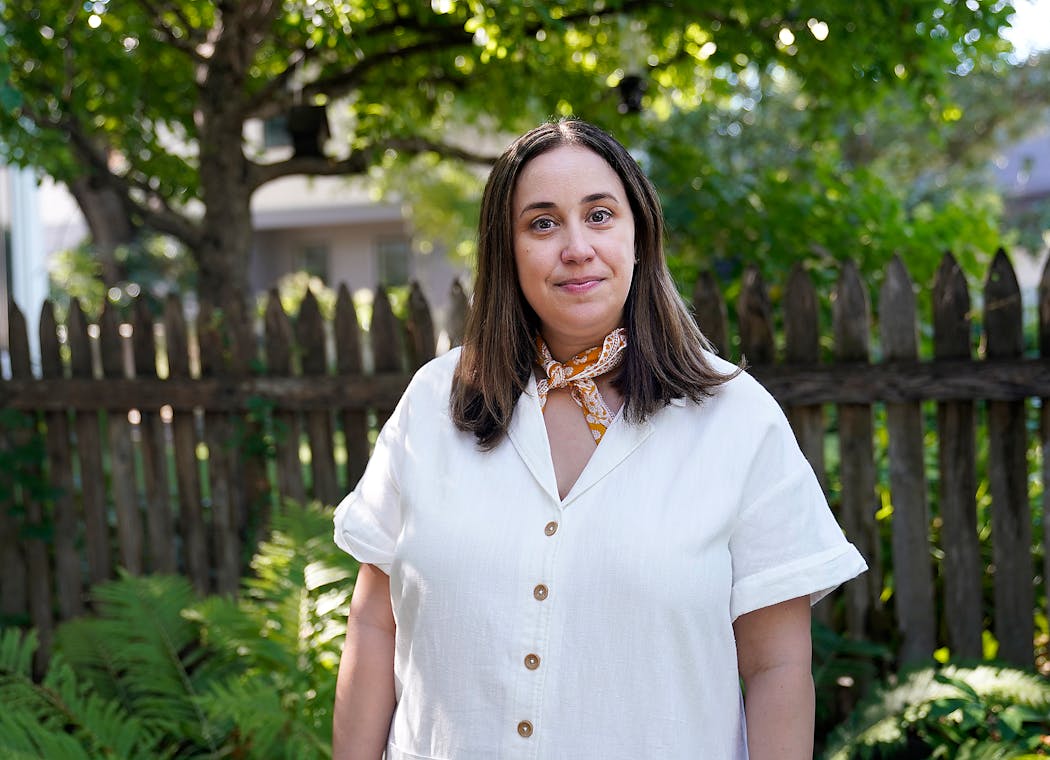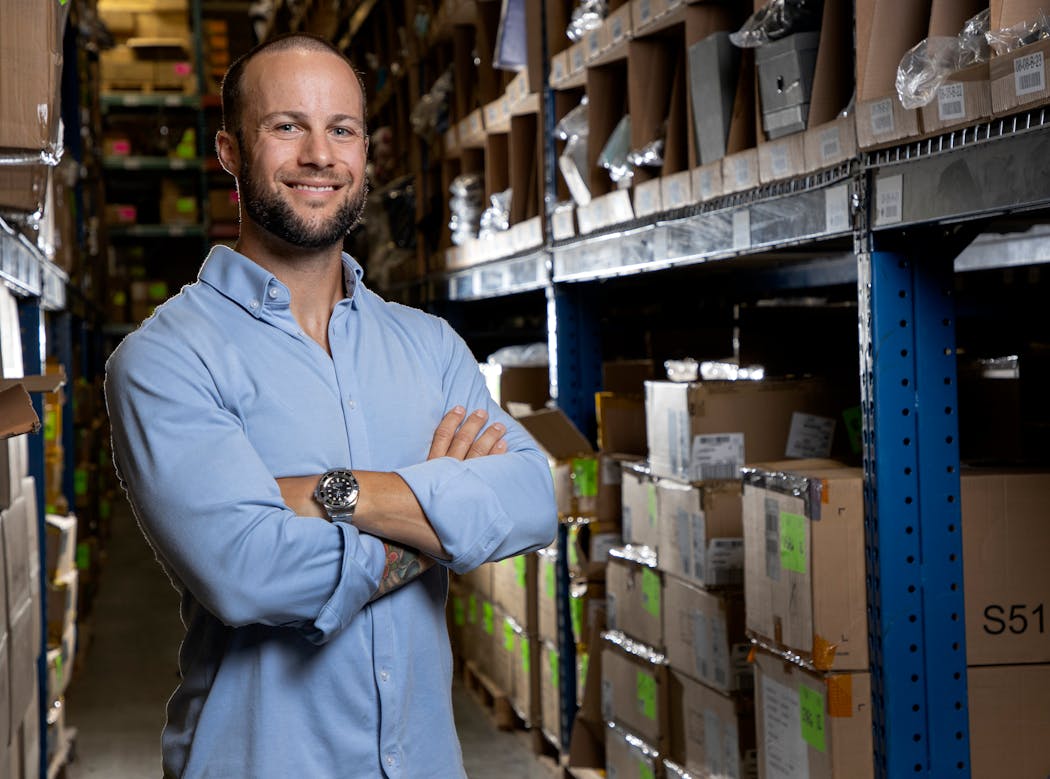ho wouldn't want to be Steve Jobs or Earl Bakken, building their Apple and Medtronic startups in garages and becoming the unicorns of their industries?
But in a day and age when founders must sell themselves more than ever — on social media, in front of investors, pitching customers — running a startup isn't as romantic as it may seem, even when your business succeeds. And only about half of businesses started in Minnesota in 2013 were still active five years later, according to Bureau of Labor Statistics data.
The Disrupters
First-generation Somali American nurses bridge care gap
Minnesota’s new business leaders writing own rules
They launched successful startups. Here’s how they did it
Minnesota couple reworked hardware store. Now what?
How Best Buy exec embraced unconventional thinking
Baking mix she craved didn’t exist, so she cooked up a company
Twin Cities real estate veteran’s experience fed innovation
Still, entrepreneurship is a challenge more and more people in the Twin Cities are taking on. Business formations are at a decade high. San Francisco's Startup Genome, a policy and research organization, ranks Minneapolis-St. Paul fourth on its list of the top 100 emerging startup ecosystems in the world and second in the U.S. behind Detroit.
Take Georgia Fort, who went into business for herself because it was her best chance to stay in journalism in the Twin Cities. Or Elyse Ash, who started a company because she saw a way to support couples going through infertility like her family did.
Even when you're successful, it's hard and risky to continually push your own vision — especially when you're young.
"You hear about contracts or funding rounds, but you don't hear about layoffs and stress," said Stephanie Rich, head of platform at Bread & Butter Ventures, a Minneapolis venture capital firm. "For every win, there's a struggle to get there."
When Ash started Fruitful Fertility, a free mentorship matching network for couples with infertility issues, the business took off. The St. Paul resident raised thousands of dollars in capital from angel investors as more than 6,000 people started using the platform.
In the process, she became somewhat of a darling on the local startup scene — featured on industry panels, lauded for her innovation, picked as a rising entrepreneur.
Then the pandemic hit, colliding with dents in her business model. The business dissolved in 2021, and she returned 75% of investors' money.
"It was like, "If I'm not this person, then who am I?'" she said.
Ultimately, Ash decided to stay in the entrepreneurial ecosphere but by working for Cloudburst, a Minneapolis tech product and development services company for startups.
Her experience is a common one. Most entrepreneurs succeed after multiple tries and multiple mistakes, buffeted by unexpected economic changes, evolving business models or the doubts of naysayers and skeptics.
Reed Robinson — who now invests in startup companies in Minnesota through his early-stage investment firm, Groove Capital, and is the former head of the BetaMN startup organization — knows firsthand the uphill battle entrepreneurs face.
In 2011, at 27 and with a new MBA in his hand, Robinson and his partners formed Heroic, a marketplace that let homeowners share recommendations of local service providers. The process of building the company was a high.
Being an entrepreneur "is a disease, and I don't mean that in a negative way," he said.
Over an 18-month period, Reed and his co-founders built the website while raising nearly $200,000 from investors.
Then the business started unraveling. Investors suggested ideas and new business models, and the co-founders started moving in too many directions. Eventually, enthusiasm faded and the company dissolved in 2013. But not before being sued by a rival company.
"You want to adjust to the market based on what you're learning, but if it's too malleable and it changes over time, people lose track of who you are and what you do and you might not be giving yourself the time that is required for the customer or market to understand who you are and why you're different," Robinson said.
'I think I caught a bubble'
Jeremy Segal started his discount clothing and equipment business Proozy as Lyons Golf when he was a teenager. The idea has always been to find a marketplace for clothing and gear.
At first it was brick and mortar stores. Then, at age 20, he started convincing clothing makers that had always sold to department stores to diversify and sell some merchandise online.
"I think I caught a bubble before it was about to happen," Segal, now 37, said. "They never understood those types of quantities can be sold online."
A few years later, it was selling to customers using Amazon or Groupon.
Then he made another big decision in 2015 — and not a popular one, Segal said. He decided Proozy needed to create a direct-to-consumer website.
"Nobody liked the decision because we already had a huge Amazon business," he said. "The only way to build a business at scale would be to do it on our own site, with our own customers."
But again, the pivot allowed the Eagan-based business to grow. It now employs 100 and by the end of 2023 should hit $120 million in sales, Segal said.
The confidence to take big risks and stand by your decisions worked for Segal, but it does not mean it was easy, especially when he was 20 and across the table from people two to three times his age.
Capitalizing on change
Atif Siddiqi, co-founder and CEO of Minneapolis-based fintech company Branch, can relate. He was working at Time Warner in Los Angeles when he felt an urge to do more than observe how smartphones were changing how people operated their lives.
"I saw these big paradigm shifts," he said. "I wanted to be able to capitalize on some of these shifts."
At 28, Siddiqi started his first tech company, which he sold less than two years after creating. He then launched and sold another.
He had some heady experience when he started Branch in 2015. Still, he participated in a Minneapolis startup accelerator — and realized the best way for his newest company to grow was to move it to the Twin Cities. This company also took a longer-term commitment to build, carefully adding new services that would attract bigger customers.
Branch allows companies to accelerate payments to their workers or receive tips digitally. It also now offers a zero-fee bank account through a partnership and a debit cards.
So far, Siddiqi has raised $133 million from investors as Branch continues building a customer base that now numbers 400, including Uber Freights and Walmart's Spark delivery platform.
Like Segal with Proozy, though, Siddiqi had to develop a strong backbone because he not only was changing how people were getting paid, but disrupting the pay cycle.
"We challenged the status quo of what it means to get paid and when," Siddiqi said.
'Here's the blueprint'
Branch has competitors in the space. And so does broadcast journalist Fort, as she develops a model of telling news through social media.
Fort started Blck Press in August 2020 after she applied for broadcast jobs all over the Twin Cities and didn't get any. She had experience, and she had confidence people wanted to see her stories.
Fort, 34, started her own business to stay in journalism, but she has found the freedom to build a company that reflects her values as a biracial woman who wants to tell stories about the Black community. She also want her company to be more equitable.
"You can publish your scripts in a way that's authentic to you and your culture and not conform to AP [Stylebook of] standard English," she said. "You can wear your hair the way it naturally grows out of your head and be on camera and not have your bosses tell you it's a violation of your contract, and here's how you do it. Here's the blueprint."
In the process, her team has found all kinds of ways to be creative. Sometimes a photo tells the story. Sometimes, it's raw video. Sometimes it's closer to a TV news segment. She now has roughly 200,000 followers on channels like Facebook and TikTok.
The first year she operated on a shoestring, having won some grants. She thought she had to create a whole new business model as she built a news business on social media and admits she wasted time doing so. In the end, she has settled on a sponsorship/subscription model similar to newspapers and magazines and also would like to build a financial model to share stories with traditional TV outlets and get paid for them, instead of freelancing for the stations.
The somewhat organized chaos of the first few years has given Fort and her team a seat at the table with sources. "It [also] has given me the confidence to cultivate the next generation of independent journalists and say the game has changed."




